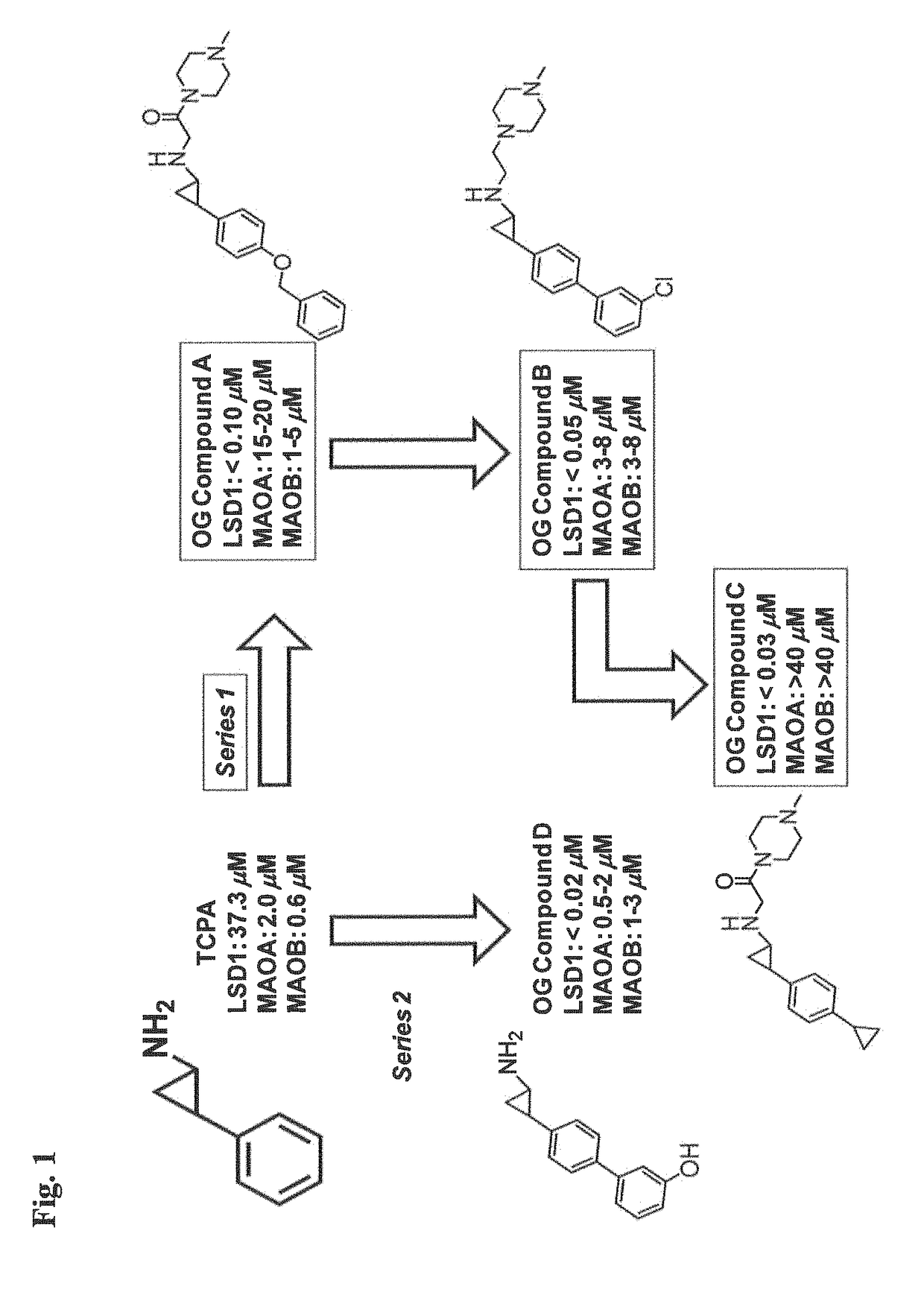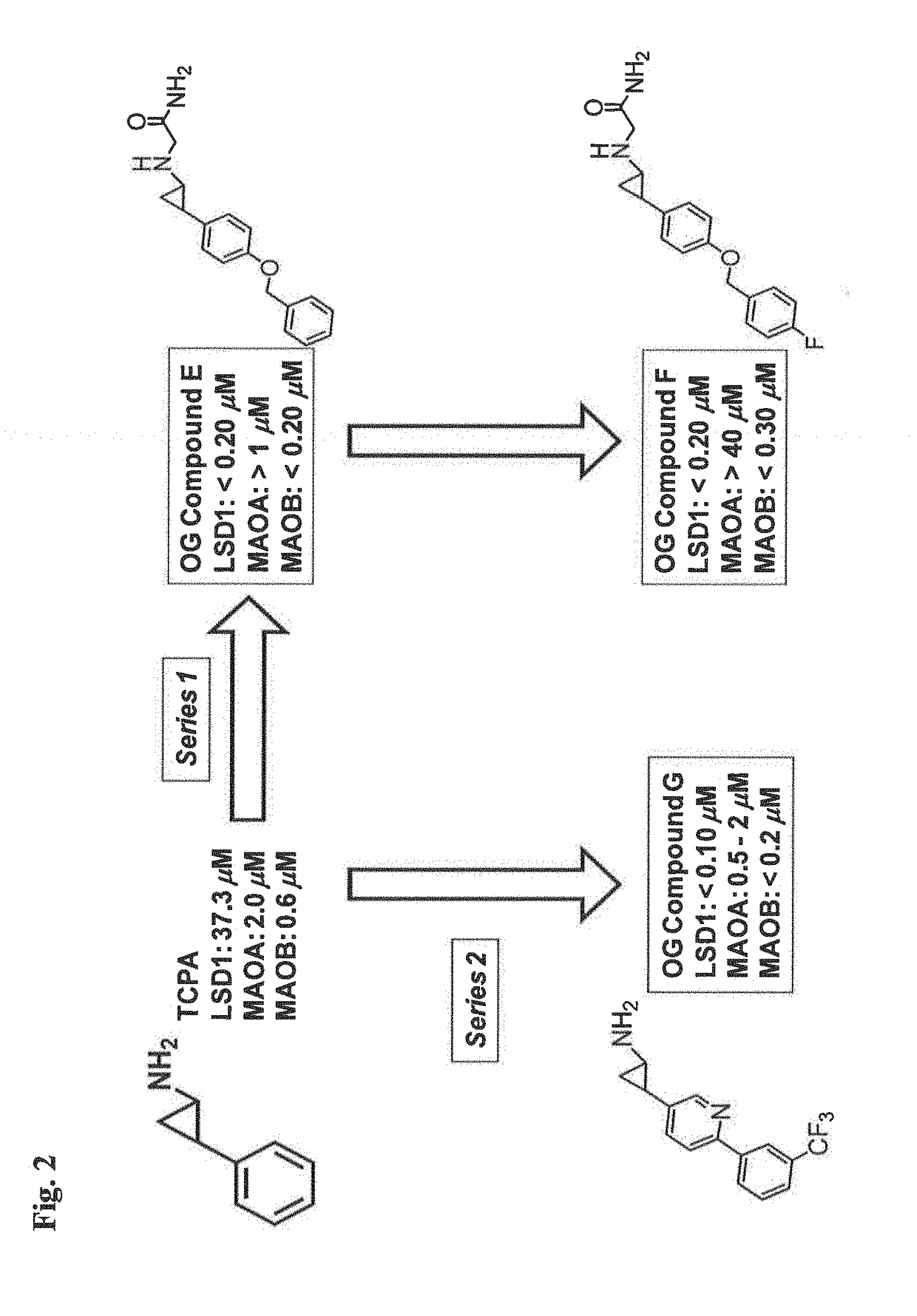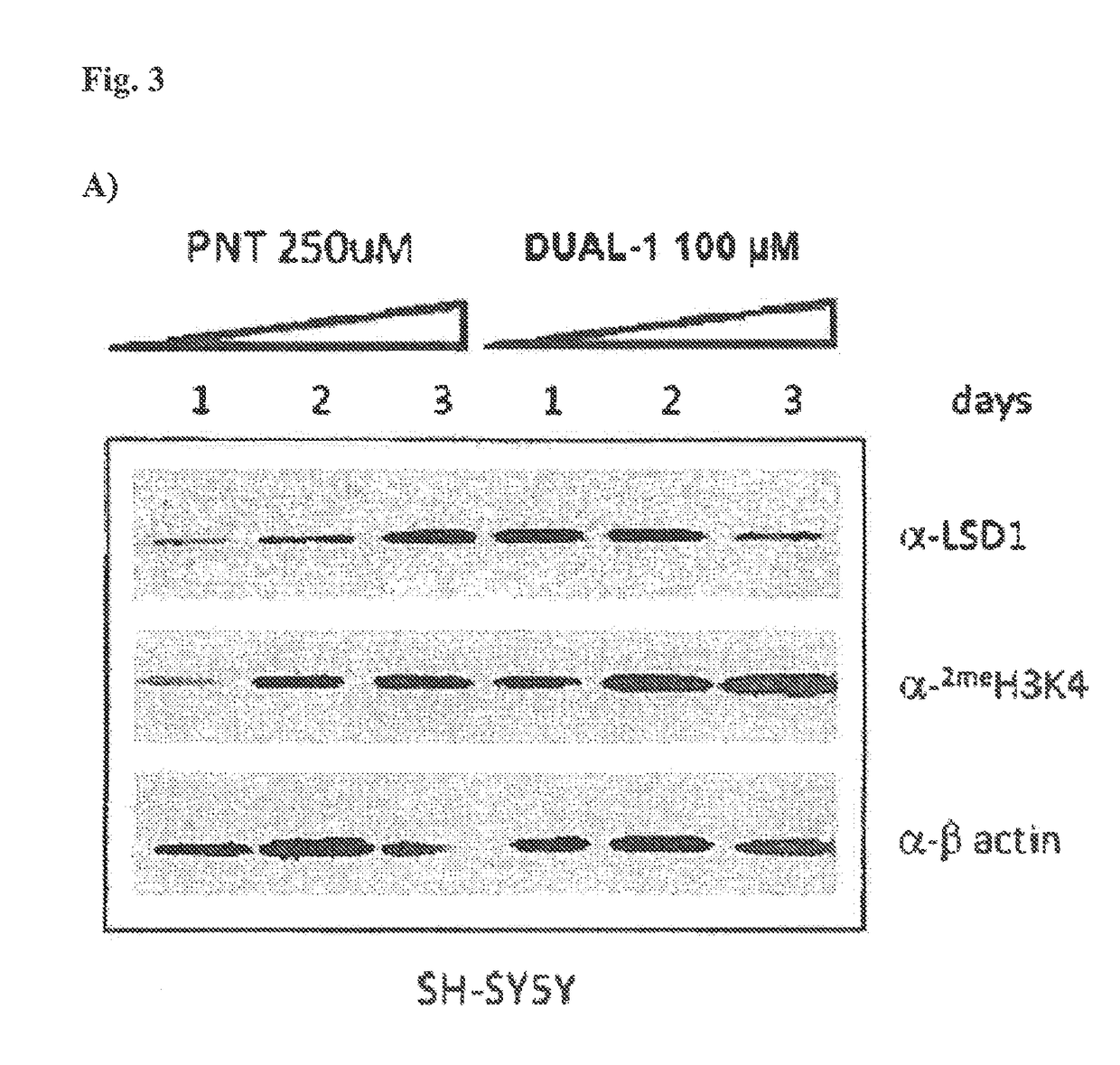Lysine demethylase inhibitors for diseases and disorders associated with Flaviviridae
a technology of lysine demethylase and disease, which is applied in the field of lysine demethylase inhibitors for diseases and disorders associated with flaviviridae, can solve the problems of limited success in combating hcv, unavailability, and enormous burden of hepatitis c virus, so as to reduce the rna of hcv and avoid side effects
- Summary
- Abstract
- Description
- Claims
- Application Information
AI Technical Summary
Benefits of technology
Problems solved by technology
Method used
Image
Examples
example 1
Biochemical Assays
[0313]Compounds for use in the methods of the invention can be identified by their ability to inhibit LSD1. The ability of the compounds of the invention to inhibit LSD1 can be tested as follows. Human recombinant LSD1 protein was purchased from BPS Bioscience Inc. In order to monitor LSD1 enzymatic activity and / or its inhibition rate by our inhibitor(s) of interest, di-methylated H3-K4 peptide (Millipore) was chosen as a substrate. The demethylase activity was estimated, under aerobic conditions, by measuring the release of H2O2 produced during the catalytic process, using the Amplex® Red peroxide / peroxidase-coupled assay kit (Invitrogen).
[0314]Briefly, a fixed amount of LSD1 was incubated on ice for 15 minutes, in the absence and / or in the presence of various concentrations of inhibitor (e.g., from 0 to 75 μM, depending on the inhibitor strength). Tranylcypromine (Biomol International) was used as a control for inhibition. Within the experiment, each concentratio...
example 2
LSD1 and LSD1 / MAOB Dual Inhibitors
[0321]
Compound LSD1 IC50MAOA IC50 MAO B IC50No.(uM)(uM)(uM)Dual-1>1.0Dual-2>40Selective-1>1.0>1.0Selective-2>1.0>1.0uM = μM
[0322]
[0323]Other specific examples of LSD1 inhibitors include Compound X
[0324]
[0325]Compound Y
[0326]
[0327]which are both selective LSD1 inhibitors
[0328]and Compound Z
[0329]
[0330]which is a dual LSD1 / MAOB inhibitor.
example 3
LSD1 and LSD1 / MAO-B Dual Inhibitors Increase Histone Lysine Methylation in Cell Based Assays
[0331]Histone from SH-SY5Y cells grown in the presence of Compound Dual-1 (a dual LSD1 / MAOB inhibitor) or tranylcypromine (parnate) for 1, 2, and 3 days were extracted and subjected to western blot analysis using a commercially available antibody specific for dimethylated H—K4. B-actin was used as a loading control.
[0332]The results of a western blot stained for H3K4 methylation with SH-SY5Y cells grown in the presence of Compound Dual-1 or tranylcypromine (parnate) for 1, 2, and 3 days, show that this compound, Dual-1, increases H3K4 methylation in cells in a time dependent manner and furthermore Compound Dual-1 appears to be 10-fold or more potent at increasing global dimethylated H3K4 levels as compared to tranylcypromine.
[0333]Furthermore, the inventors have conducted similar studies for other dual inhibitors of LSD1 / MAOB and with selective LSD1 inhibitors and found that these compounds c...
PUM
| Property | Measurement | Unit |
|---|---|---|
| time | aaaaa | aaaaa |
| time | aaaaa | aaaaa |
| time | aaaaa | aaaaa |
Abstract
Description
Claims
Application Information
 Login to View More
Login to View More - R&D
- Intellectual Property
- Life Sciences
- Materials
- Tech Scout
- Unparalleled Data Quality
- Higher Quality Content
- 60% Fewer Hallucinations
Browse by: Latest US Patents, China's latest patents, Technical Efficacy Thesaurus, Application Domain, Technology Topic, Popular Technical Reports.
© 2025 PatSnap. All rights reserved.Legal|Privacy policy|Modern Slavery Act Transparency Statement|Sitemap|About US| Contact US: help@patsnap.com



